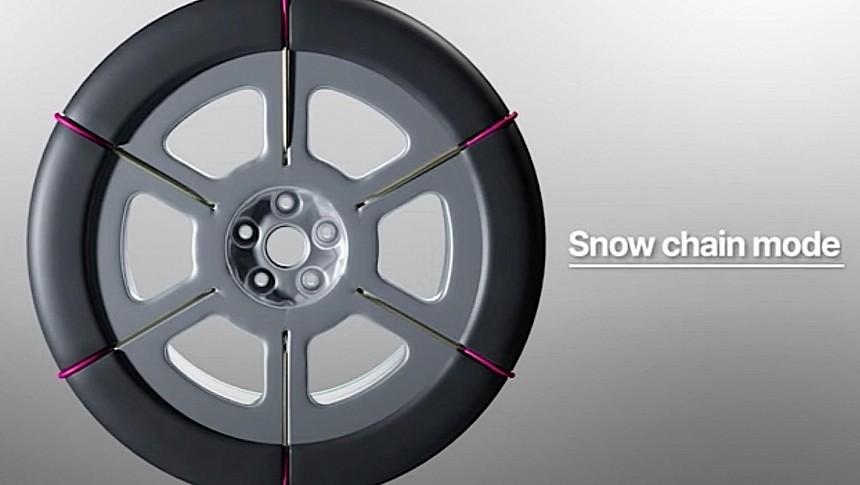
6 photos
That’s pretty much all a snow chain is supposed to do, but the technology does come with its share of disadvantages. First of all, people have to step out into the cold to put them on. Then, fitting snow chains on wheels, although not a particularly complicated maneuver, does prove challenging more often than it should.
Having snow chains (we’ll call them that for lack of a better term) integrated right into the wheel would prove a lot more convenient. For some reason though, despite the many inventions and innovations of the automotive industry, we don’t have such a solution available at this time.
We might soon, though, if South Korean companies Hyundai and Kia have it their way. The two partners introduced this weekend a nameless piece of tech that might make driving in the snow and on the ice a piece of cake, one served at the push of a button.
The idea is so simple is genius: why not integrate snow chains directly into the wheel, so they could be switched on and off depending on need?
The way the two companies plan to do that is to use alloy modules installed inside the tire itself in such a way they spill the circumference of the wheel into equal segments. More or less, they turn the solid wheels we’ve been used to for decades into segmented ones that look not unlike a pizza.
When there’s no need for them, the bits of metal stay tucked inside the wheel, not coming in contact with the road surface in any way. When conditions require their use, though, they move outward, coming out the wheel and the tire itself to form a sort of impromptu snow chain. Ok, not really a chain, because the modules are not connected to one another, but you get the idea.
The way the slices of metal do this is by taking advantage of shape memory alloys, which when hit with an electrical signal tend to come back to their original shape. In this case, they come out of the radial grooves, or channels, that house them.
Now, the solution seems it could work, but it does come with its share of challenges. The most important of them all is the fact current tires, no matter who makes them or how advanced they are, are not compatible with the system.
That’s why Hyundai and Kia imagine this thing as an integrated solution that offers the wheel, the tire, and the snow chain in a single package, one that’s yet to be developed.
Maybe this idea may seem a bit far-fetched at the moment, but the South Koreans are working on it regardless. They’ve even filed for patents in South Korea and the U.S., and they even plan “mass production of the tires after further technological development, durability and performance tests and regulation reviews.”
It’s unclear what that means in terms of how much time it’ll be until the Hyundai-Kia mother of all snow chains get here.






